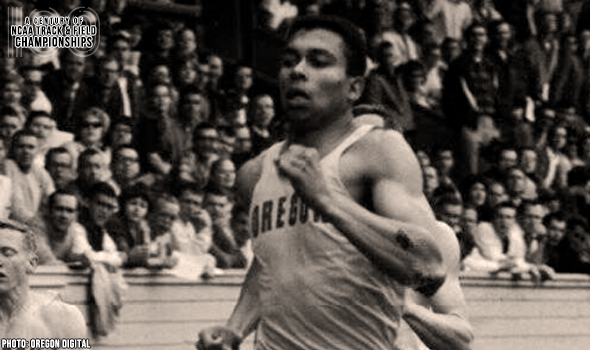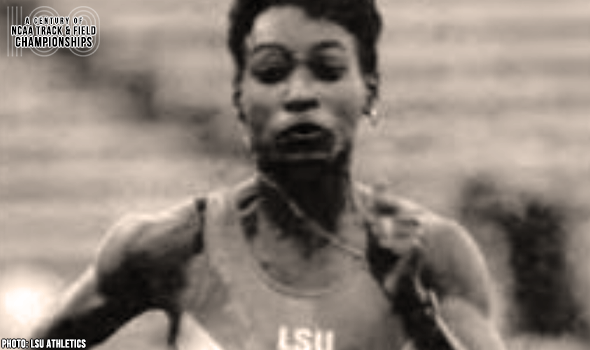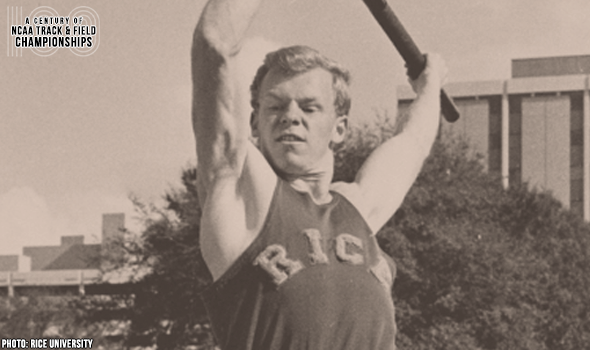
Oregon’s Jerome Sprinted To NCAA Glory
If ever a meet could have used photo-finish timing, it was the 1964 NCAA Outdoor Track & Field Championships.
The 5000 and 400 were both ruled deadlocks, but those were with merely two runners inseparable.
The 100-meter final saw three sprinters crossing the line at almost the same instant: Harry Jerome of Oregon, Edwin Roberts of North Carolina Central and Trenton Jackson of Illinois.
It took almost an hour to sort the finish, but when they did, Jerome was ruled the victor in 10.1. Roberts (second) and Jackson (third) were also credited with that same mark as well.
“Honestly, that’s one I’d hate to judge on,” Jerome said about the finish to Dick Leutzinger of the Eugene Register-Guard. “Usually I know when I win or lose. I’d hate to say on that one.”
While the 10.1 was a meet and collegiate record, it wasn’t a PR for Jerome. He still owned a share of the world record of 10.0 that he set in the summer after his freshman season back in 1960.
Jerome was a Canadian prodigy who came from great lineage. As a high school standout in North Vancouver, British Columbia, he broke a 31-year-old national record in the 220 yards. And many knew his grandfather, John Armstrong Howard, who was the first Black athlete to represent Canada in the Olympic Games.
The fact that Jerome was even running in 1964 – near his best, let alone at all – was a comeback story for the ages. Jerome tore his quadriceps tendon in the fall of 1962 at the British Commonwealth Games and the seriousness of the injury led many to believe that he would never run again. He didn’t believe that and a little over a year later, he opened the 1964 season by equaling the world indoor best in the 60-yard dash with his time of 6.0.
Then at the 1964 NCAA Championships, Jerome doubled back in the 200, taking third to lead Oregon to its second team title in three years – both at Hayward Field. The Ducks won their first national title in 1962 when Jerome won the 220 yards and was runner-up in the 100.
Not long after that, Jerome went to the Tokyo Olympic Games, where he earned his lone Olympic medal – a bronze in the 100.
Jerome died in 1982 of a brain aneurysm at age 42. In 1984, the Labatts Classic held in Burnaby was renamed the Harry Jerome Classic and in 1988 a statue of him was erected in Vancouver’s Stanley Park.
The NCAA and collegiate track & field will mark a momentous milestone in the spring of 2021 -- the 100th anniversary of the NCAA Championships and with that, the NCAA Track & Field Championships. In June 1921, the University of Chicago hosted the first track & field championships in NCAA history.
This point can’t be emphasized enough: Not only was the event the first for NCAA track & field, but the first championships for any sport under the sponsorship of the NCAA.
To celebrate, over each of the next 365 days, the U.S. Track & Field and Cross Country Coaches Association (USTFCCCA) will celebrate moments, student-athletes, and coaches that have made a century’s worth of championships special. From humble beginnings to important historical milestones to the modern-day, collegiate track & field has evolved with the American society.
The 2021 edition of the NCAA Division I Outdoor Track & Field Championships begin with preliminary round action on May 27-29 in Jacksonville, Fla., and College Station, Texas. The championships final site and culmination of the celebration is slated for June 9-12, 2021 at the newly rebuilt Hayward Field in Eugene, Ore.

Clemson’s Ross Kept Getting Faster In 1995
Duane Ross PR’d twice in the 110H at the 1995 NCAA DI Outdoor T&F Championships. When Ross won in 13.32, he became the No. 3 performer in collegiate history.

Illinois’ Kerr Went Back-To-Back At NCAAs
George Kerr won back-to-back 800/880 titles at the NCAA Outdoor T&F Championships in 1959 & 1960. Kerr set a meet record of 1:46.4 in the 800 meters in 1960.

UCLA’s Baucham Bounded To TJ CR In 2005
Candice Baucham won the triple jump at the 2005 NCAA DI Outdoor T&F Championships with a collegiate record of 14.07m (46-2). Baucham took the event by more than one foot.

San Romani Went From Unknown To Legend
Archie San Romani won back-to-back 1500/mile crowns at the NCAA Outdoor T&F Championships in 1935 & 1936.

Auburn’s Glance Made Them Look Twice
Harvey Glance completed the 100-200 double as a freshman at the 1976 NCAA DI Outdoor T&F Championships. He set a meet record of 10.16 in the 100.

Nova’s Rhines Did NCAA 5K Three-Peat
Jen Rhines was the first female athlete in the history of the NCAA DI Outdoor T&F Championships to win three consecutive 5K titles.

Georgia’s Erm Cruised To 2019 Decathlon Title
Johannes Erm won the decathlon at the 2019 NCAA DI Outdoor T&F Championships by 342 points with his 8352 total. That was also the fifth-best score in meet history.

McMillen Adapted, Set 1500 MR In 1952
Bob McMillen set a meet record in the 1500 meters of 3:50.7 at the 1952 NCAA Outdoor Track & Field Championships.

LSU’s Duhaney Destroyed NCAA 200 Field In 1992
Dahlia Duhaney owns the largest margin of victory in meet history in the 200 with her 0.44-second winner at the 1992 NCAA DI Outdoor T&F Championships.

Rice’s Roberts Cooked Up Pole Vault Greatness
Dave Roberts was the second man to win three consecutive pole vault titles at the NCAA DI Outdoor T&F Championships, doing so from 1971 to 1973.

